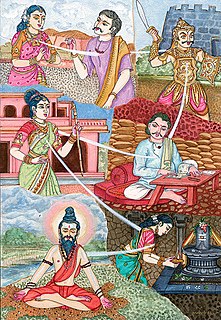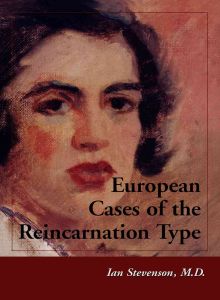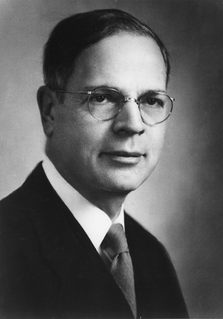
Parapsychology is the study of alleged psychic phenomena and other paranormal claims, for example related to near-death experiences, synchronicity, apparitional experiences, etc. It is considered to be pseudoscience by a vast majority of mainstream scientists, in part because, in addition to a lack of replicable empirical evidence, parapsychological claims simply cannot be true "unless the rest of science isn't."
Parapsychology is a field of research that studies a number of ostensible paranormal phenomena, including telepathy, precognition, clairvoyance, psychokinesis, near-death experiences, reincarnation, and apparitional experiences.

Reincarnation, also known as rebirth or transmigration, is the philosophical or religious belief that the non-physical essence of a living being begins a new life in a different physical form or body after biological death. Resurrection is a similar process hypothesized by some religions, in which a soul comes back to life in the same body. In most beliefs involving reincarnation, the soul is seen as immortal and the only thing that becomes perishable is the body. Upon death, the soul becomes transmigrated into a new infant to live again. The term transmigration means passing of soul from another body to another after-death.

Ian Pretyman Stevenson was a Canadian-born American psychiatrist. He worked for the University of Virginia School of Medicine for fifty years, as chair of the department of psychiatry from 1957 to 1967, Carlson Professor of Psychiatry from 1967 to 2001, and Research Professor of Psychiatry from 2002 until his death.

Xenoglossy, also written xenoglossia and sometimes also known as xenolalia, is the supposedly paranormal phenomenon in which a person is able to speak or write a language they could not have acquired by natural means. The words derive from the Greek xenos (ξένος), "foreigner" and glōssa (γλῶσσα), "tongue" or "language". The term xenoglossy was ostensibly coined by French parapsychologist Charles Richet in 1905. Stories of xenoglossy are found in the Bible, and contemporary claims of xenoglossy have been made by parapsychologists and reincarnation researchers such as Ian Stevenson. There is no scientific evidence that xenoglossy is an actual phenomenon.

Twenty Cases Suggestive of Reincarnation is a 1966 book written by psychiatrist Ian Stevenson on claims of spontaneous recall of information about previous lives by young children. The book focuses on twenty cases investigated by the author. It has been translated into seven foreign languages.

Acharya Godwin Samararatne was one of the best known lay meditation teachers in Sri Lanka in recent times. During his teaching career he was based at his Meditation Centre at Nilambe in the central hill country near Kandy. After his death in March 2000 letters and tributes poured in as many people around the world attested to the impact that Godwin and his teaching had made on their lives.

Life Before Life: A Scientific Investigation of Children's Memories of Previous Lives is a 2005 book written by psychiatrist Jim B. Tucker, which presents an overview of more than 40 years of reincarnation research at the University of Virginia, into children's reports of past-life memories. The book also discusses "birthmarks and birth defects that match those of a deceased person who is identified by the child". The foreword to the book is written by Ian Stevenson.

Jim B. Tucker is a child psychiatrist and Bonner-Lowry Professor of Psychiatry and Neurobehavioral Sciences at the University of Virginia School of Medicine. His main research interests are documenting stories of children whom he claims remember previous lives, and natal and prenatal memories. He is the author of Life Before Life: A Scientific Investigation of Children’s Memories of Previous Lives, which presents an overview of over four decades of reincarnation research at the Division of Perceptual Studies. Tucker worked for several years on this research with Ian Stevenson before taking over upon Stevenson's retirement in 2002.
Satwant Pasricha is the head of Department of Clinical Psychology at NIMHANS, National Institute of Mental Health and Neurosciences at Bangalore. She also worked for a time at the University of Virginia School of Medicine in the USA. Pasricha investigates reincarnation and near-death experiences. Pasricha co-authored the 2011 book Making sense of near-death experiences, which was Highly Commended in the Psychiatry category at the 2012 British Medical Association Book Awards.

Old Souls: The Scientific Search for Proof of Past Lives is a non-fiction book by journalist Tom Shroder. An editor at The Washington Post, Shroder traveled extensively with psychiatrist Ian Stevenson of the University of Virginia, who conducted past life and reincarnation research in Lebanon, India and the American South. Shroder's journalistic experience makes this book a valuable review of an often disparaged subject.

C. T. K. Chari was Head of the Department of Philosophy at Madras Christian College from 1958 to 1969 and the most prominent among contemporary Indian philosophers who paid close attention to psi phenomena. Chari published extensively on extremely diverse topics, such as logic, linguistics, information theory, mathematics, quantum physics, philosophy of mind, and, of course, psi research.
In psychology, anomalistic psychology is the study of human behaviour and experience connected with what is often called the paranormal, with the assumption that there is nothing paranormal involved.

Reincarnation and Biology: A Contribution to the Etiology of Birthmarks and Birth Defects is a 1997 two-part monograph written by psychiatrist Ian Stevenson and published by Praeger. Where Reincarnation and Biology Intersect is a condensation of the two books written for the general reader.

European Cases of the Reincarnation Type is a 2003 book by psychiatrist Ian Stevenson, who conducted research into claims of reincarnation. The work focuses on different reincarnation research case studies in a Western setting. It was Stevenson's last book before he died in 2007.

Gardner Murphy was an American psychologist specialising in social and personality psychology and parapsychology. His career highlights included serving as president of the American Psychological Association, and of the British Society for Psychical Research.
Robert F. Almeder is Professor Emeritus of Philosophy at Georgia State University. He is known in particular for his work on the philosophy of science, and has also written on the philosophy of mind, epistemology and ethics. He is the author of 24 books, including The Philosophy of Charles S. Peirce (1980), Death and Personal Survival (1992), Harmless Naturalism: The Limits of Science and the Nature of Philosophy (1998), Human Happiness and Morality (2000), and Truth and Skepticism (2010).
Shanti Devi, known as Lugdi Devi in her past life, was an Indian woman who claimed to remember her previous life, and became the subject of reincarnation research. A commission set up by the Indian political leader Mahatma Gandhi supported her claim, while another report by researcher Bal Chand Nahata disputed it. Subsequently, several other researchers interviewed her, and published articles and books about her.
Antonia (Tonia) Mills is a professor in First Nations studies at the University of Northern British Columbia, Canada. Her current research interests include First Nations land claims, religion and law, and reincarnation research. Mills met Ian Stevenson in Vancouver in 1984 and was impressed with his reincarnation case studies. Since 1964, she has done field work with the Beaver Indians.
Jan Ehrenwald was a Czech-American psychiatrist and psychotherapist, most known for his work in the field of parapsychology. His work largely focused on extrasensory perception and its supposed implications for psychoanalysis.













